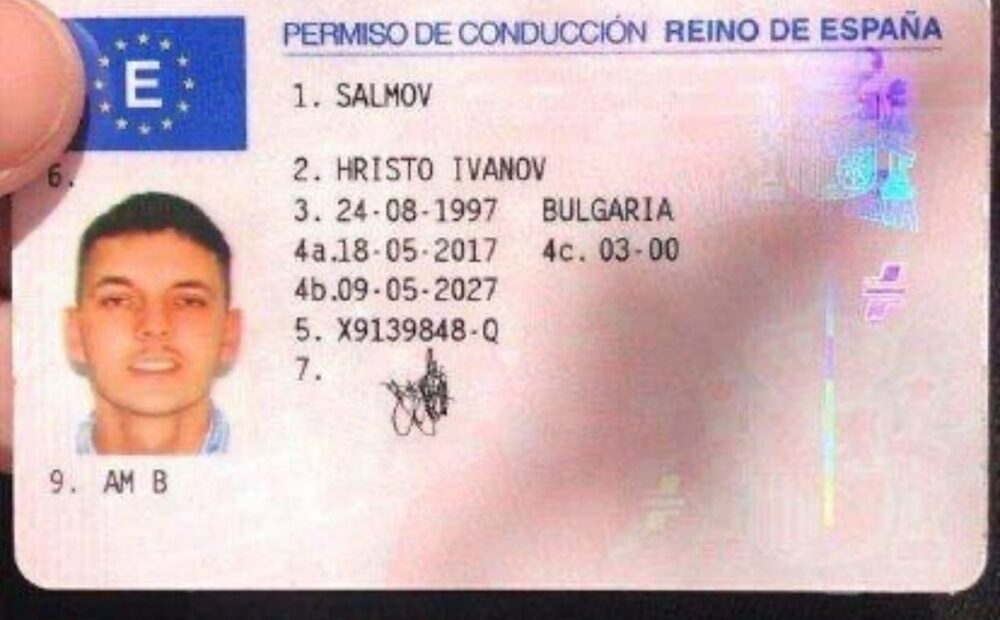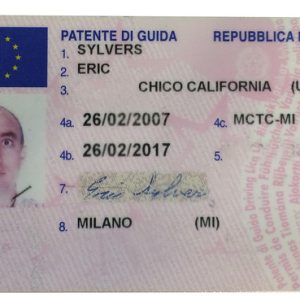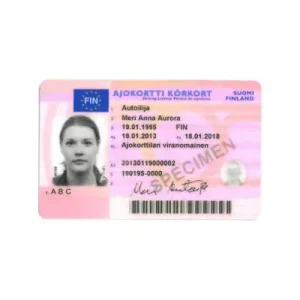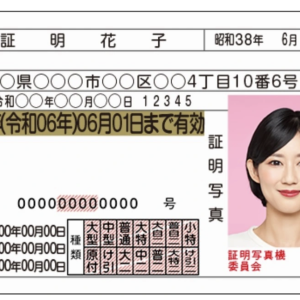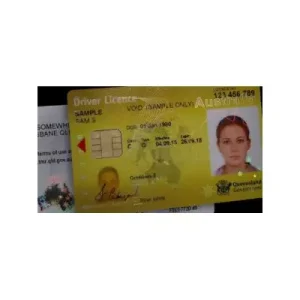Description
Driving in Spain can be quite the adventure. But getting your Spanish driver’s license is a whole other type of adventure in and of itself.
Fasten your seatbelt and get ready to ride through some of the essential steps with me.
STEP 1 – UNDERSTANDING WHO CAN LEGALLY DRIVE IN SPAIN
Child driving car
The legal driving age in Spain is 18 years old. Those who are under 18 cannot drive legally in Spain—even if they hold a legal license from their home country.
(Sorry young US citizen – you may be able to drive at 16 back home but not here.)
Anyone over 18 with a valid national driving license from their home country can legally drive in Spain—at first. For Non-EU/EEA citizens, this applies for the first six months after moving to Spain and gaining residency. For EU/EEA nationals, it’s two years.
After that initial grace period your adventure in Spanish bureaucracy will begin.
STEP 2 – FOLLOWING YOUR LEGAL PROCESS ACCORDING TO YOUR SPECIFIC SITUATION:
If you are an EU/EEA citizen (plus Iceland, Norway and Lichtenstein) who is a legal resident in Spain, you’ll have to obtain a Spanish driver’s license. You can do this either by exchanging your foreign license or renewing your foreign license.
You can legally drive in Spain using your existing driving license for the first two years of residence in Spain. Although – important! – after six months you must register your details with the traffic authorities. You can do this at your Registro Central de Conductores e Infractores of the Provincial Traffic Headquarters (Jefatura Provincial de Tráfico).
Once you’ve registered you’ll need to take a medical examination at a Centro de Reconocimiento de Conductores Autorizado.
YOU MUST ADHERE TO THE SAME CONDITIONS AS SPANISH DRIVER’S LICENSE HOLDERS. THIS INCLUDES:
Doctor crossing arms
Undertaking any necessary/required medical tests.
Renewing or exchanging the Spanish Driver’s license after the first two years’ residence in Spain. If an EU license is renewed in Spain it effectively converts it into a Spanish EU license. This needs to be renewed every 10 years up to the age of 65, and every five years after 65.
If you don’t obtain a Spanish driver’s license after two years of residency, you can face a €200 fine.
To exchange your EU/EEA license to that of a Spanish driving license, you’ll need to go to the Provincial Traffic Headquarters. Bring the following documents with you to be processed:
Application form
Valid passport or national identity card
Proof of residence (Certificate of Registration in the Central Aliens Register, i.e. your NIE number or Número de Identificación de Extranjero or Empadronamiento)
Valid driving license to be exchanged in Spain (original and photocopy)
Two recent photographs (32x25mm)
Declaration in writing that you haven’t been banned or suspended from driving
Declaration in writing that you don’t hold another driving license of the same class in another country.
LONG STORY SHORT
Simplify written on ground behind car
In other words, if you are an EU/EEA citizen, your process is a lot more simplified. You will also have a longer grace period than that of any Non-EU/EEA citizen. Live it up while you can! You’re saving a lot of time, money and energy in NOT having to take the Spanish driving test.
***As for any UK citizen who is currently looking for information related to how Brexit could/would affect their Spanish driver’s license – I would recommend staying up-to-date via the GOV.UK website.
You can also currently exchange your UK driving license for a Spanish driving license, although due to Brexit, this process is less smooth than normal.
For any Non-EU/EEA citizens (like myself) you’ll need to get your Spanish driving license. You can do this by either exchanging your foreign license if your country has an agreement with Spain (lucky!) or you’ll be required to take a Spanish driving license test (like myself). This includes the theoretical (written) test and the practical test as well.
IT’S NOT ALL BAD NEWS!
All Non-EU/EEA citizens may legally drive in Spain using your existing foreign driving license for up to six months after moving to Spain, once you’ve received your residency. If your foreign license is not in Spanish, you must always carry an official translation or an International Driving Permit (IDP) which is only valid for one year and must be applied for outside of Spain in your home country.
While waiting for your residency to be approved you may legally drive using your existing foreign driving license for up to one year as long as you have your IDP on hand with your legal license from your home country.
So who are some of these lucky 20 some-odd nationalities who can just exchange their license over to a Spanish one?
THE LUCKY COUNTRIES!
Lucky clover
Citizens of Algeria, Andorra, Argentina, Brazil, Bolivia, Chile, Colombia, Dominical Republic, Ecuador, Guatemala, Japan, Korea, Macedonia, Morocco, Nicaragua, Peru, Panama, Paraguay, Philippines, Serbia, Switzerland, Turkey, Tunisia, Ukraine, Uruguay and Venezuela
Be sure to always check with your home country’s consulate in Spain or the Spanish traffic authority as agreements between countries are always changing.
Diplomats and international staff can also exchange their license regardless of their nationality – contact the Ministry of Foreign Affairs for more information.
In general, in order to exchange your Non-EU/EEA license you’ll need the following forms to be processed (*some countries may need extra translations or forms from their consulate/embassy – make sure to always double check):
Application form
Valid national identity card or passport (original)
Residence permit, identity card or foreign passport, along with the Certificate of Registration in the Central Register of Foreigners for EU foreigners or residence permit for non-EU: original effect. Valid residence card.
Medical fitness report from a recognized medical center (such as the Authorised Drivers’ Check Centre (Centro de Reconocimiento de Conductores Autorizado)
Valid driving license to be exchanged (original and photocopy)
Two recent photographs (32x25mm)
Declaration in writing that you haven’t been banned or suspended from driving
Declaration in writing that you don’t hold another driving license of the same class issued by another EU country.
Once again, your process is a lot more simplified than that of any Non-EU/EEA citizen who’s country doesn’t have an agreement regarding this legal process. Live it up while you can and know that you’re saving a lot of time, money and energy in NOT having to take the Spanish Driving Test.
ALRIGHTY, WE HAVE NOW COME TO THE HIGHLIGHT OF THIS ARTICLE – THE SPANISH DRIVING TEST!
STEP 3 – THE SPANISH DRIVING TEST:
It may be frustrating for many Non-EU/EEA citizens having to do it all again to get a Spanish driver’s license. This is especially true if they have a license and experience driving in their home country. It’s even more frustrating because most Spanish drivers do whatever the hell they want and only follow about 60% of the rules.
MY ADVICE?
Just bite your tongue and push through it and get it done. This is the land of “titulitis” and bureaucracy as well as “no pasa nada.” It is what it is, sadly. But I had a great practical training teacher and am grateful for the training I received from both tests.
I am originally from the US, and am sadly from the generation that never learned how to drive a manual car. I loved learning another skill and pushing myself to do it in Spanish (¡toma ya!).
OTHER OPTIONS
There are options in Spain to take your test in English (or a variety of other languages), as well as taking the practical test with an automatic car only. This does depend on where you live, though.
*Note – if you take the exam with an automatic car, you’ll legally only be able to drive an automatic car in Spain.
WHERE TO APPLY
You must apply to take the tests at the Provincial Traffic Headquarters (Jefatura Provincial de Tráfico). Most people end up going through an autoescuela (Official Driving School) who will do all of this for you. This includes signing you up for all of the necessary tests and providing you with the supplies, which will be part of the total price.
I signed up through my local autoescuela (shout out to Autoescuela 2000 in San Fernando de Henares & Coslada in Madrid).
I initially decided to try and take the written test in Spanish. But I switched jobs shortly after signing up and started working 40 hours a week in Spanish. My brain was fried by the end of the day, and so I decided to take it in English instead.
MY AUTOESCUELA
The autoescuela I went with didn’t have any classes in English. But they were able to request the English language book and test booklet for me from the DGT at no additional cost.
*Note: This is available through ANY autoescuela – as the DGT issues the books to the schools. You just need to speak with your local autoescuela requesting that they order these two books for you in English from the DGT.
*Extra Note: The English in these books is a strange mix of British English and a sort-of literal translation from Spanish. Either way, the questions could be understood and it should be noted to always keep an eye on the prepositions as those are the tricks they use in the Spanish version of the test and they did a similar thing when translating it into English.
They offered unlimited classes in Spanish with a teacher to prep for the written test, included in the initial price that I paid. Thankfully, there was also a simulator of a manual car that I could practice on as much as I needed. On top of this, they provided an online application with practice tests that I used at the school and at home.
I took advantage of all of these resources. But for the written (teórico) test I mainly read my English course book. I also went through the questions in the English test booklet, paying close attention to the ones I got incorrect.
I used several apps for my phone that I was able to download for free to study on-the-go. And yes, they even had the questions in English!
HERE ARE A FEW OF THE APPS THAT I USED ON MY PHONE TO STUDY FOR MY WRITTEN EXAM:
AeolCloud
TodoTest
If you’re looking for an autoescuela that has both tests and all of the preparatory and driving classes in English – be prepared to pay for it.
HERE IS A LIST OF A FEW OF THE AUTOESCUELAS THAT CAN HELP YOU GET A SPANISH DRIVING LICENSE:
Madrid – Auto Escuela Gala
Barcelona – AE Stop n Drive & Auto Escuela Corsa
WHAT YOU’LL NEED TO SIGN UP FOR THESE TESTS:
A certificate of mental and physical fitness from the Centro de Reconocimiento de Conductores Autorizado
An application form
Two passport-sized photographs
Your residence permit
Proof of address in Spain
A declaration that there are no suspensions or legal cases preventing you from driving
A declaration that you don’t already hold a similar license.
HOW MUCH DOES A SPANISH DRIVING LICENSE COST?
Well, that all depends on:
Where you live
How many times it takes you to pass the written test
How many classes you end up taking through your autoescuela
And how many times it takes you to pass the practical test
*Note – It’s important to understand that you can only fail one of the tests once. Otherwise, you have to pay an extra fee (tasa) to try again. For example: I passed my written exam on my first try. This meant I was able to take the practical exam at least twice without having to pay again. I know others who failed their written exam their first time and felt a lot of pressure to then pass their practical exam.
HERE IS MY PERSONAL EXAMPLE:
Autoescuela matrícula – €30
Examen teórico – €92
Abono 10 classes – €215 (I got two of these before my first practical test – so €430 total)
Two classes that were free and included in the price of my matrícula
Two more classes right before the first examen práctico – €43 total (so €21.50 each class)
Examen práctico #1 – €123
Five more classes before my second examen práctico – €107.50
Examen práctico #2 – €123
My total cost was around €948, including the medical checkup and such it came out to around €1000.
I would estimate that as a general minimum. That said, I know people who spent only €800 and others who spent close to €1500.
It depends on how many classes you and your teacher feel you will need, as well as how you do on your actual exams.
*Important – Do not feel rushed at all but there are time limits on how long you can wait between each test. Your written test is valid for up to two years from the time you take it – BUT your Practical test scores are only valid up to six months.
What does this mean? You can take your time after your written test. But once you take your first practical test (and fail) you have to keep the momentum up. If you wait longer than six months between your next practical test (you guessed it!) you’ll have to pay another fee (tasa).
HERE IS MY PERSONAL EXAMPLE:
I signed up in November 2015 but didn’t take the Written test until December 2016.
I started taking my practical classes in spring/summer 2017 and I took my first practical test in October 2017 (which I failed by one mistake! Argh!) and my second and final practical test in December 2017.
In the end, do what works best for you and your personal situation. But still be aware of your time limits.
*Note – You can (I had to) request a change of teacher if you feel that the teacher doesn’t work for you. I had two initial classes with a teacher but his teaching style just made me nervous and more anxious, so I went and talked with the reception at my autoescuela and they made the switch. In the end, it’s your time and your money – don’t waste either!
CONGRATULATIONS! YOU’VE MANAGED TO GET A SPANISH DRIVING LICENSE!
A full driver’s license in Spain
image source
Once you pass the practical test, you’ll receive your temporary license. This will work until your official one arrives at the autoescuela. Then you’ll also get your green L sign/plate to place in the back window of your car. You’ll have to have your green L sign/plate there for on year (from the day you passed your test). Some people decide not to do this but it will help you avoid a fee or potential issue. I used mine and had no problem at all. And to be quite honest – it helped keep the crazy Spanish drivers off my tail while I got used to circulating around this crazy capital. Take advantage of that giant L!
STEP 4 – CELEBRATE!
Whether you only had to do paperwork or you had to start from scratch – you did it!
Now go celebrate your new Spanish driving license by organizing a road trip somewhere off the map and enjoying your newfound freedom. And of course – always drive safely!


